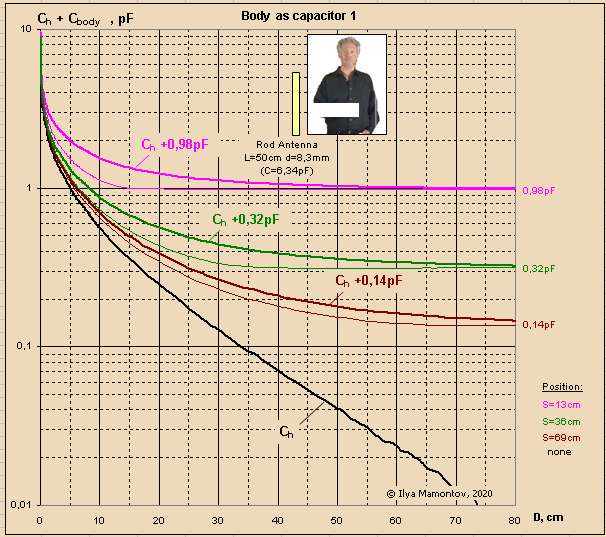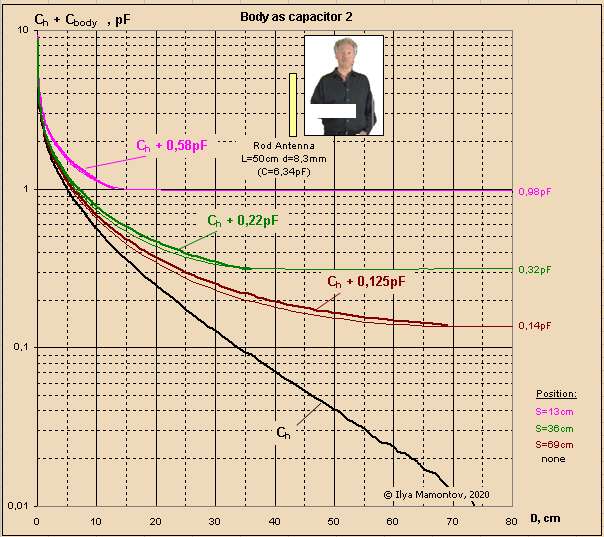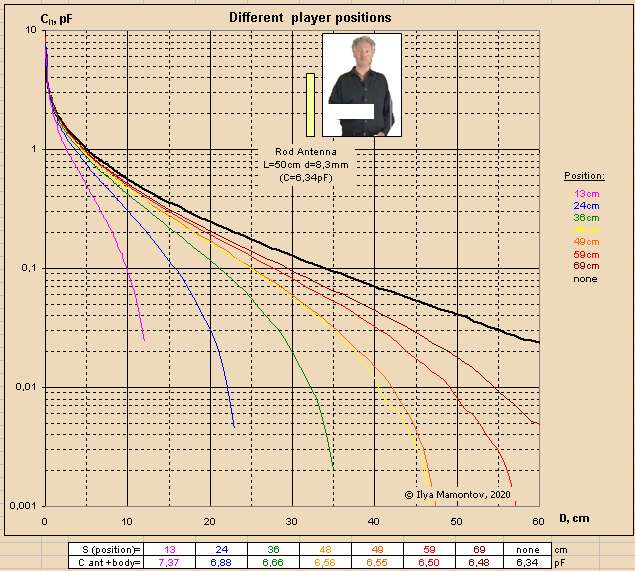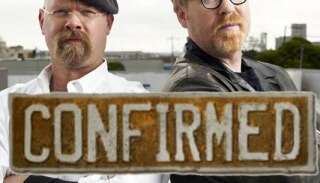Aluminum foil + Cardboard = l'uminum Peter
There is a cutout in body to pass the "hand" through it. The "player" is mounted on a plywood base which can move on the table (providing different positions relative to antenna):
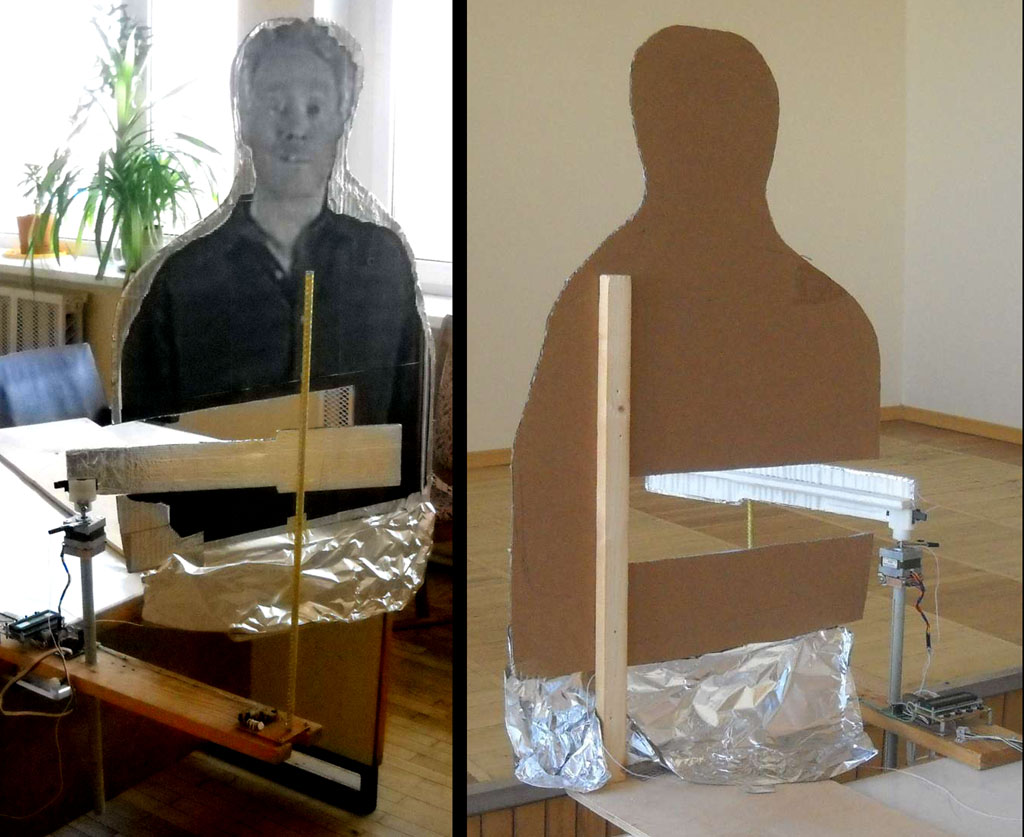
I thought for a long time about trajectory to move the player, because there are lot of possible options. Finally, I chose the same trajectory that the hand is moving along:
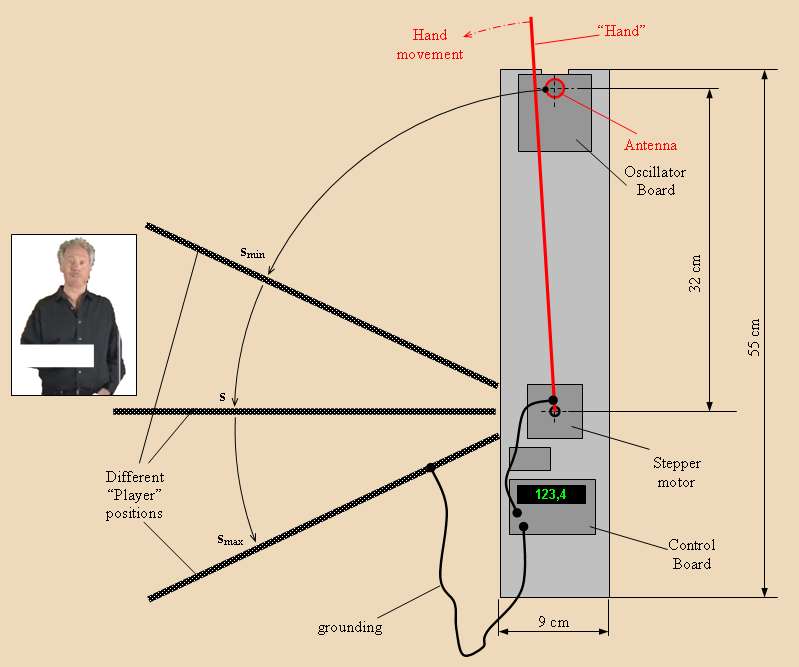
It is useful on following reasons:
- when the hand is reaching the "body" the surfaces lies in the same plane (model is more ideal),
- this moment is easily captured,
- position of player can be aligned by hand position, plus coordinate of player (S) can be accurately determined by the step number.
Of course, the position "hand in the stomach" (or behind the body) has no physical meaning, and all the extra data should be discarded. But it's still interesting what happens in this case too.
I couldn't get the distance less 13 cm (due to short length of plywood base) and more than 70 cm (intersection with the parts of setup).
Of course, "Peter" is grounded.
Antenna capacitance curves are shown below (antenna has 8.3 mm diameter and 50 cm length). Note that this representation informs us about a COMMON (hand+body) introduced capacitance. This corresponds to case when player set the pitch control once ("hand and body are away") and doesn't touch it anymore.
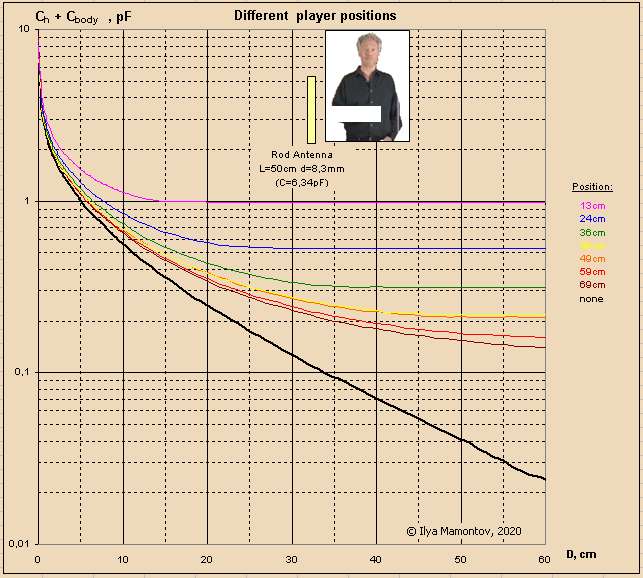
Antenna behavior is quite predictable. The closer the player to antenna the narrower the capacitance variation range. The slope of curves dramatically decreases near the player, which means too much stretched pitch scale there.


